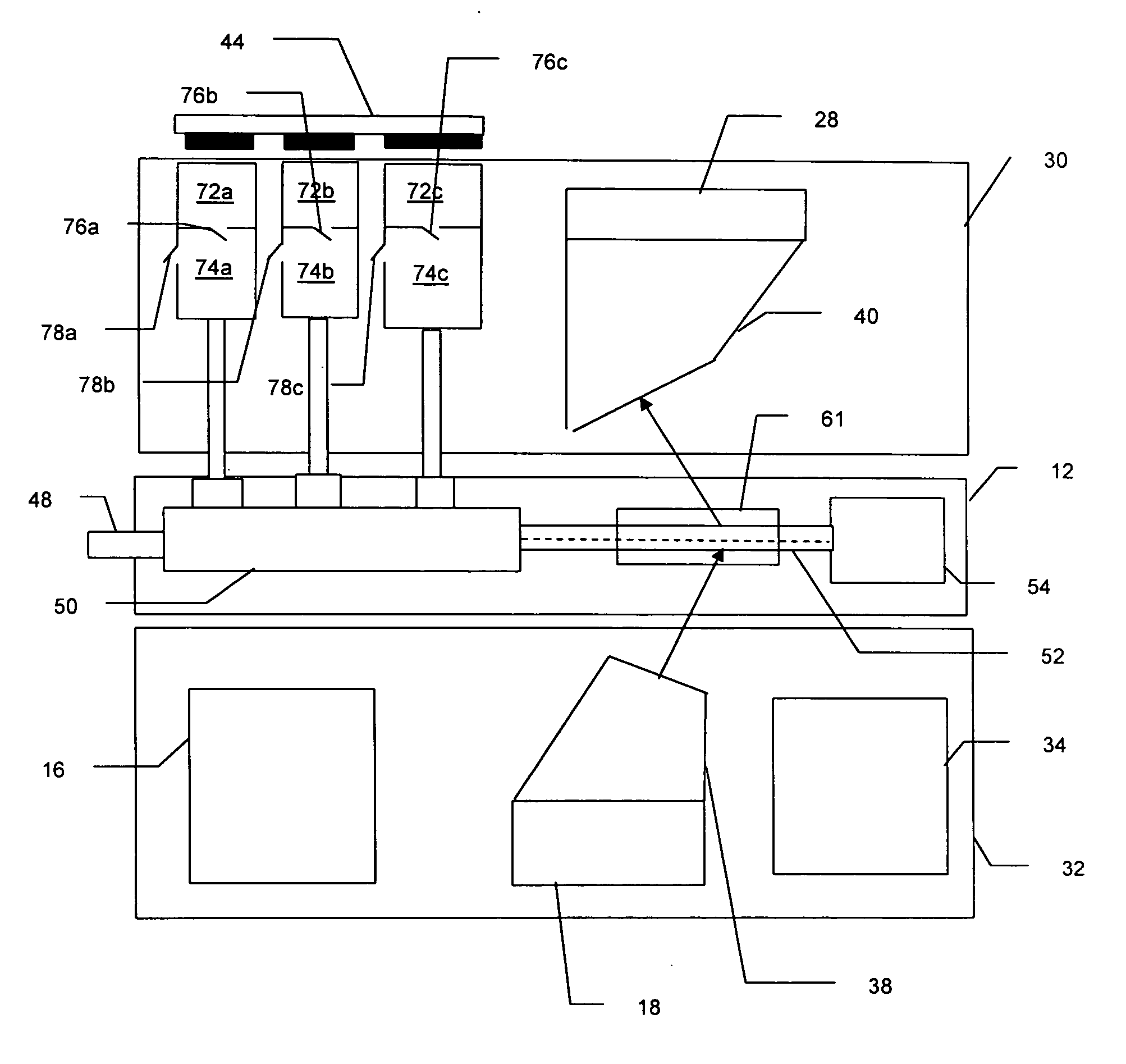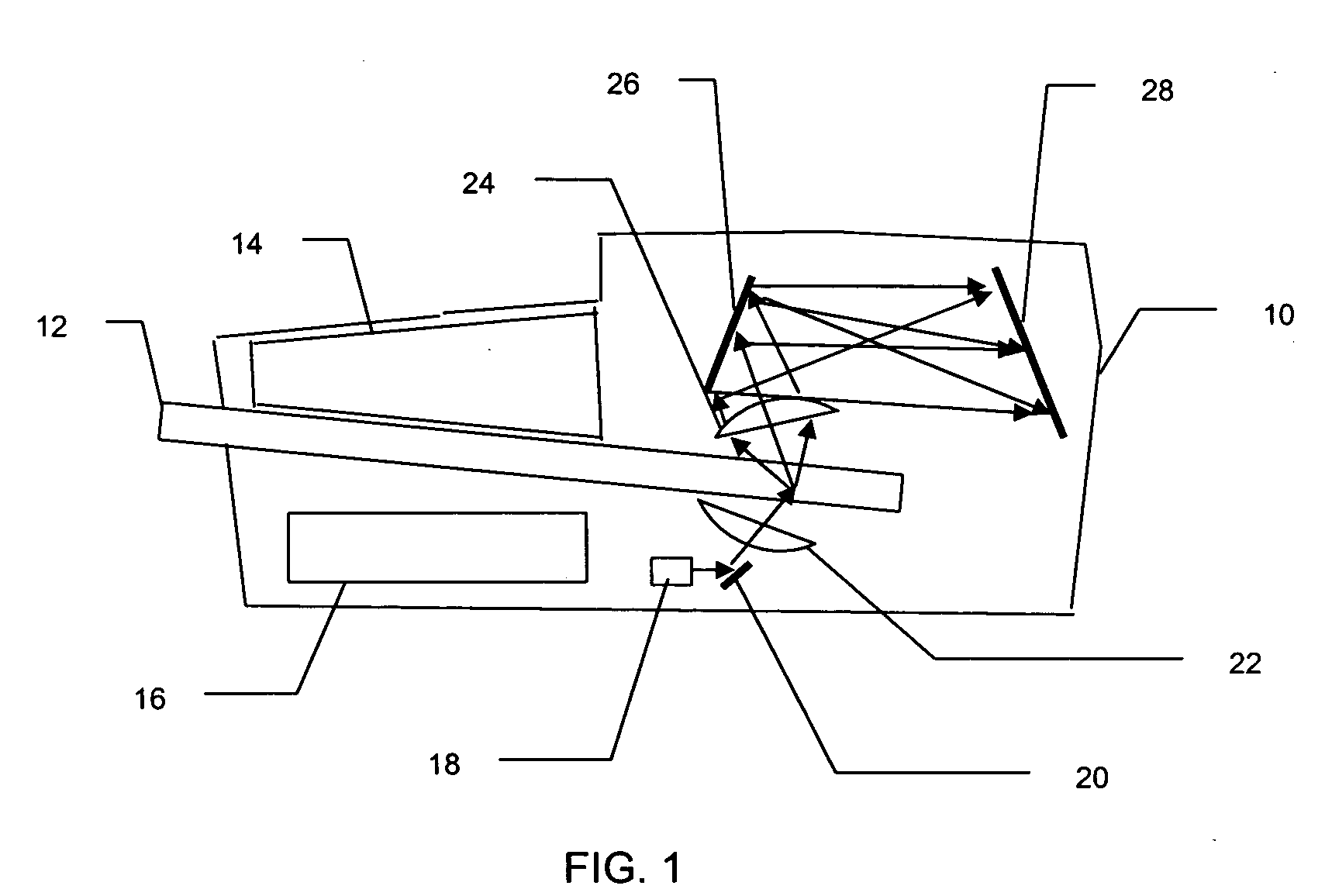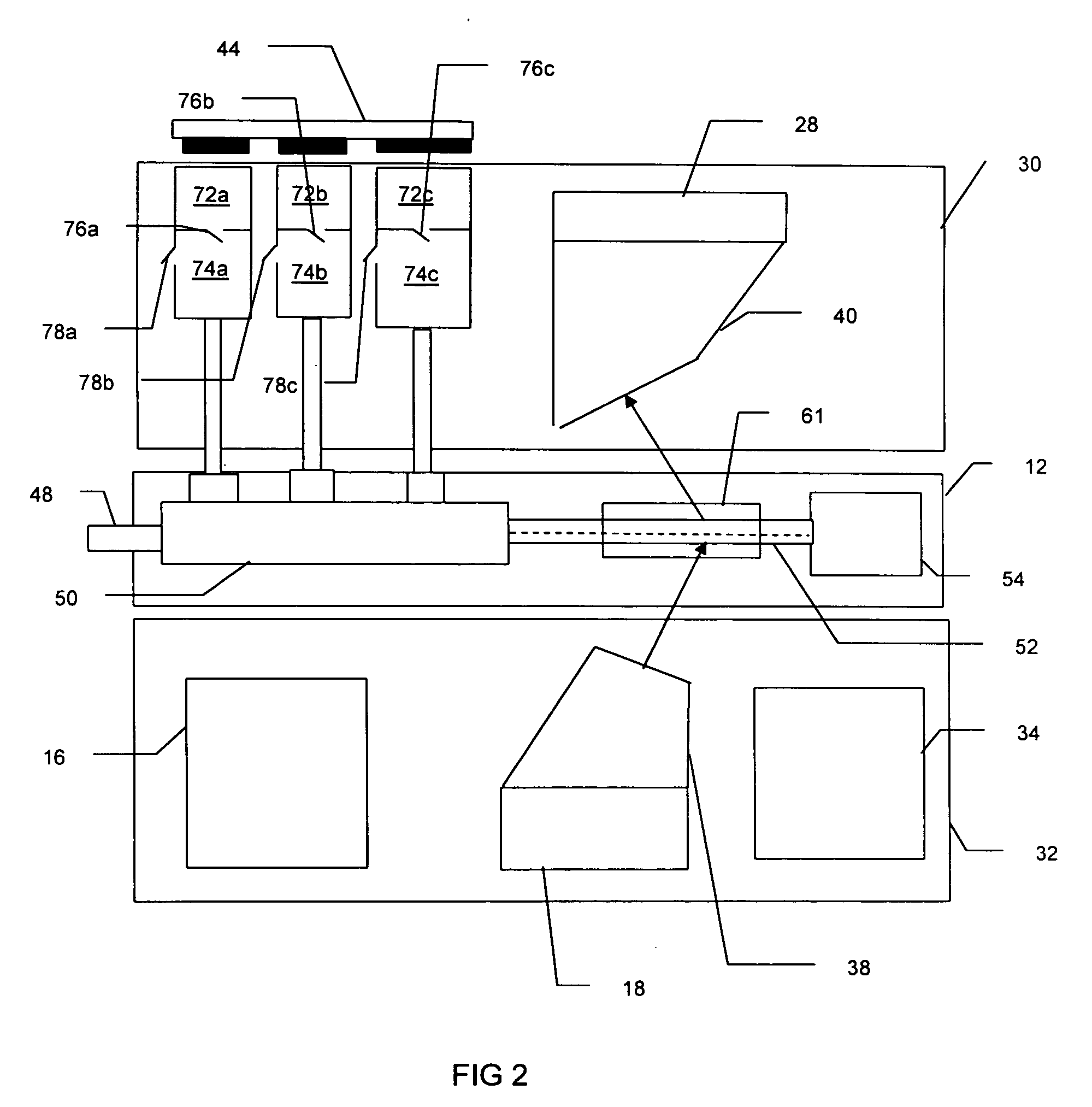Raman detection based flow cytometer
a flow cytometer and raman technology, applied in the field of flow cytometers, can solve the problems of not being able to distinguish between similarly sized, but chemically different molecules or cells, and the raman spectrum of an individual particle in the flow cytometer is well beyond the realm of practicality, and achieves the effect of surface-enhanced raman scattering cross-section
- Summary
- Abstract
- Description
- Claims
- Application Information
AI Technical Summary
Benefits of technology
Problems solved by technology
Method used
Image
Examples
Embodiment Construction
[0015] The Raman based flow cytometry of the present invention counts individually identified particles within a sample by combining non-destructive, molecule specific Raman spectroscopy with a flow cytometer's ability to sequentially observe individual molecules.
[0016] One difficulty in implementing Raman based flow cytometry is that Raman scattering has a very low cross-section, i.e., only a very small percentage of the photons in a light beam focused on a sample are Raman (in-elastically) scattered. The effective Raman cross-section of a sample may, however, be increased by the technique of surface enhanced Raman Scattering, in which each molecule is associated with a noble metal colloid or colloidal aggregate. This association can be done by, for instance, sonification of cells in a noble metal colloidal solution.
[0017] The cytometric technique of hydrodynamic focusing may then be used to arrange the prepared molecules in a single file, flowing as a core stream within a fluid ...
PUM
| Property | Measurement | Unit |
|---|---|---|
| wavelengths | aaaaa | aaaaa |
| surface enhanced Raman spectrum | aaaaa | aaaaa |
| SERS | aaaaa | aaaaa |
Abstract
Description
Claims
Application Information
 Login to View More
Login to View More - R&D
- Intellectual Property
- Life Sciences
- Materials
- Tech Scout
- Unparalleled Data Quality
- Higher Quality Content
- 60% Fewer Hallucinations
Browse by: Latest US Patents, China's latest patents, Technical Efficacy Thesaurus, Application Domain, Technology Topic, Popular Technical Reports.
© 2025 PatSnap. All rights reserved.Legal|Privacy policy|Modern Slavery Act Transparency Statement|Sitemap|About US| Contact US: help@patsnap.com



